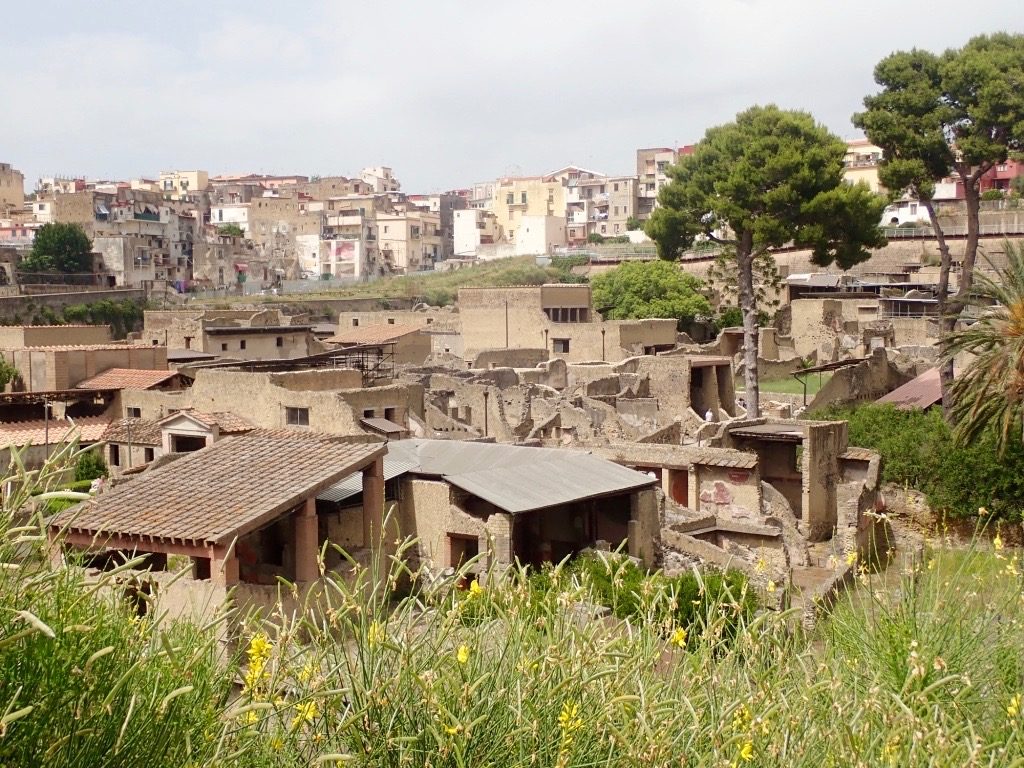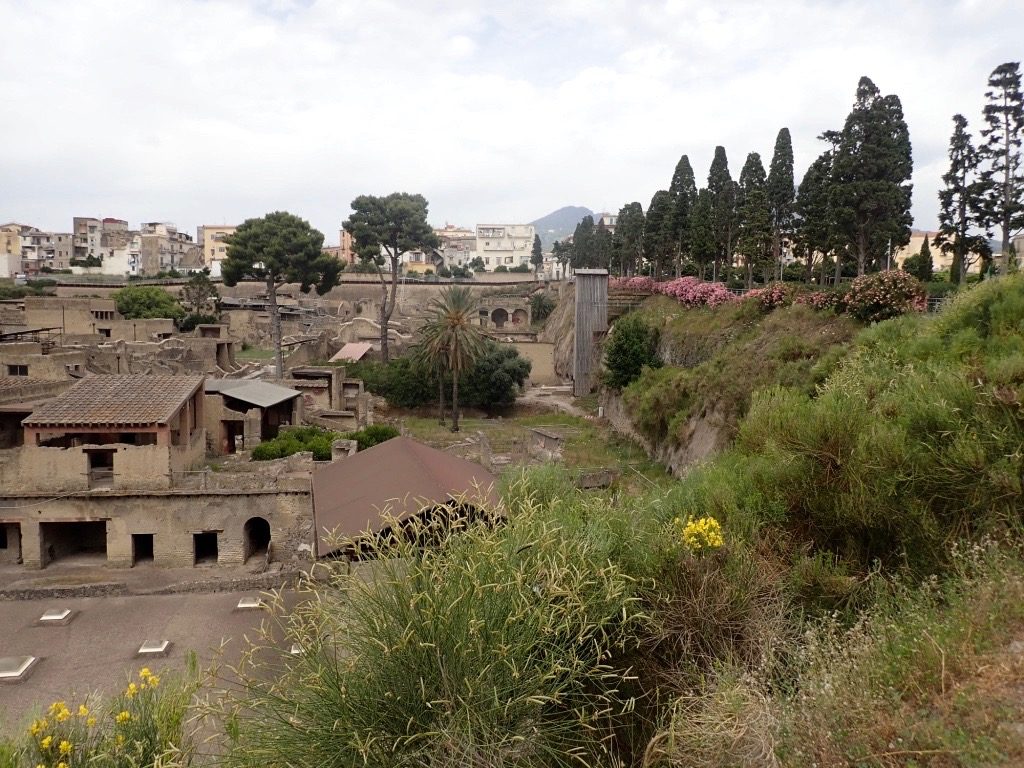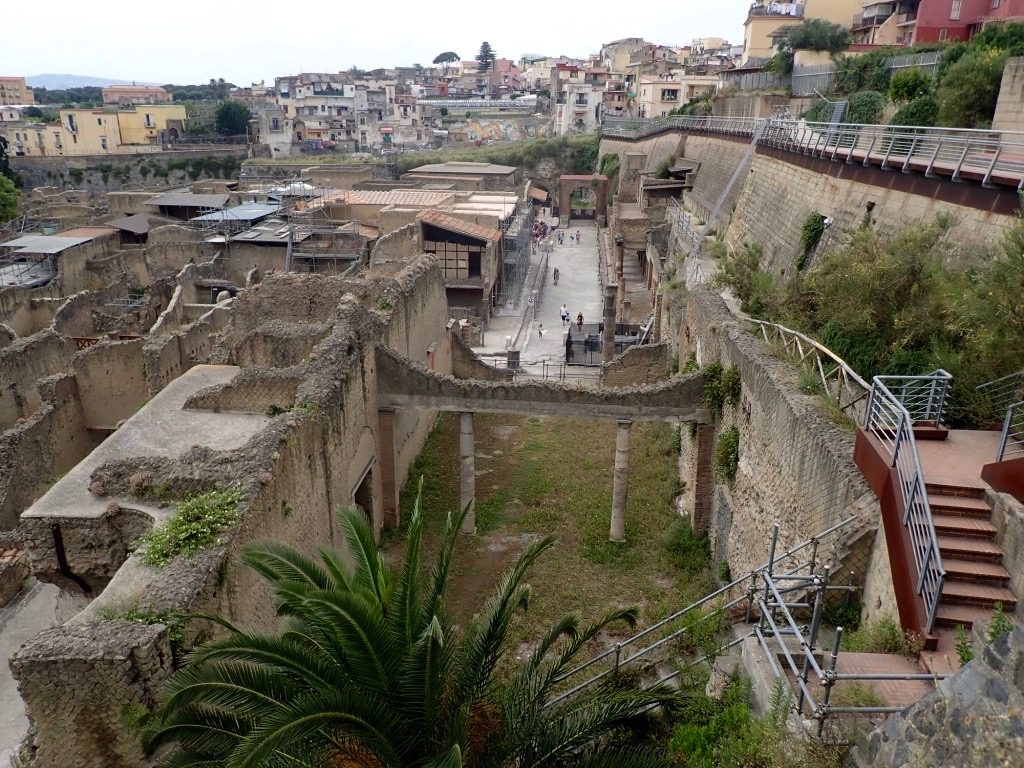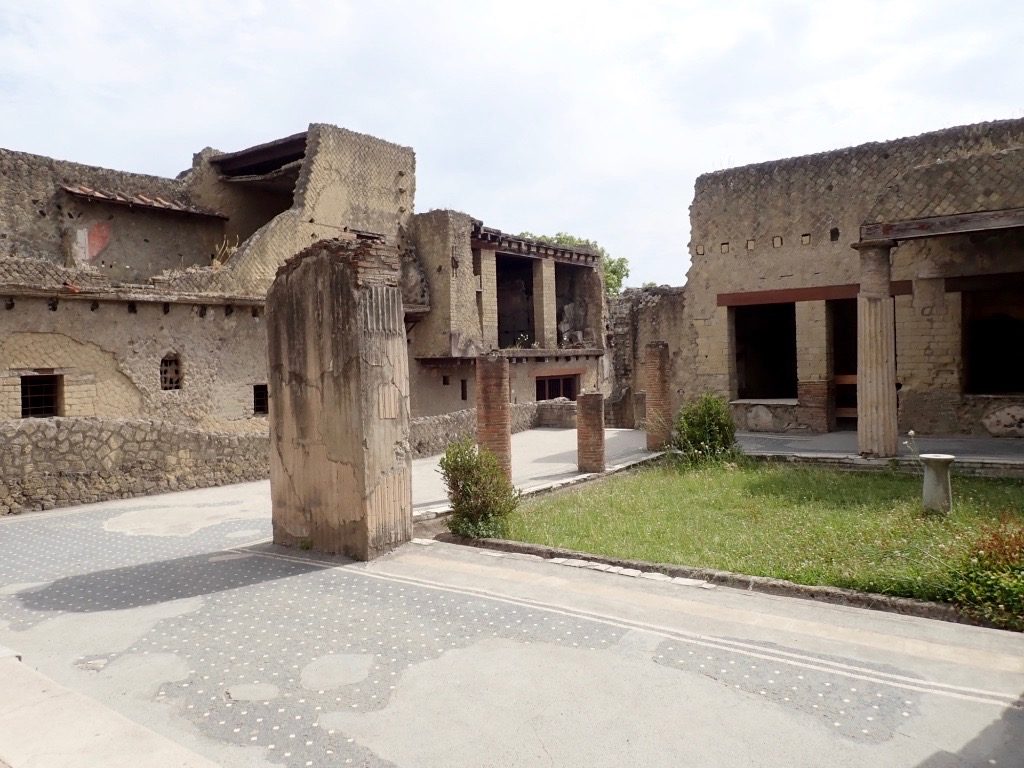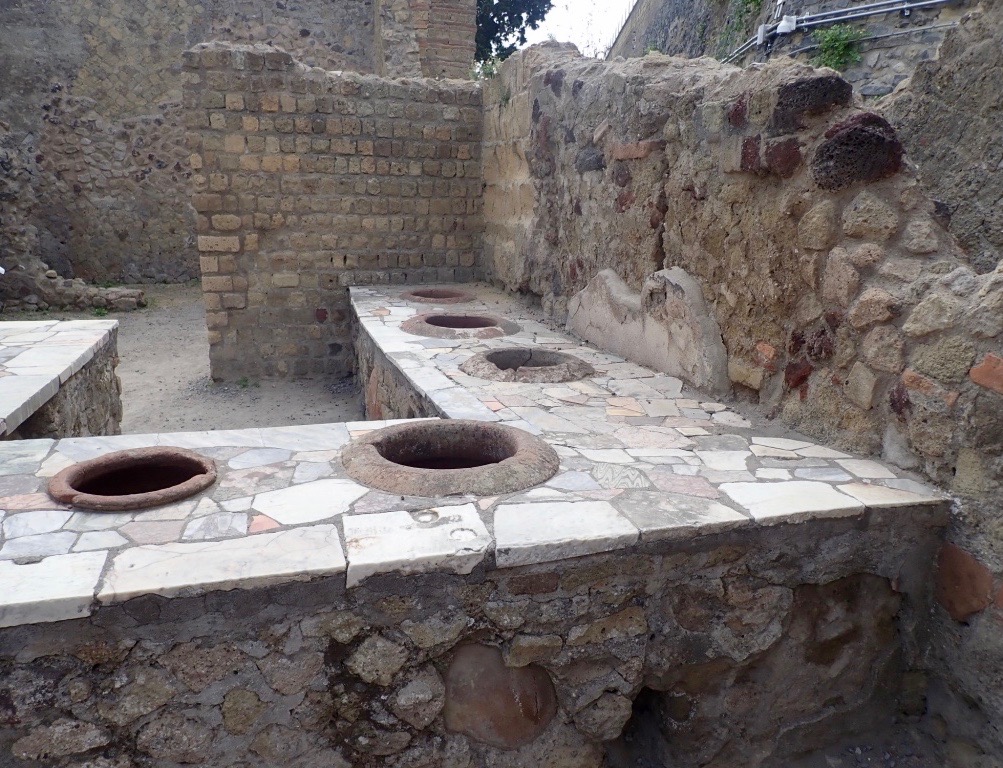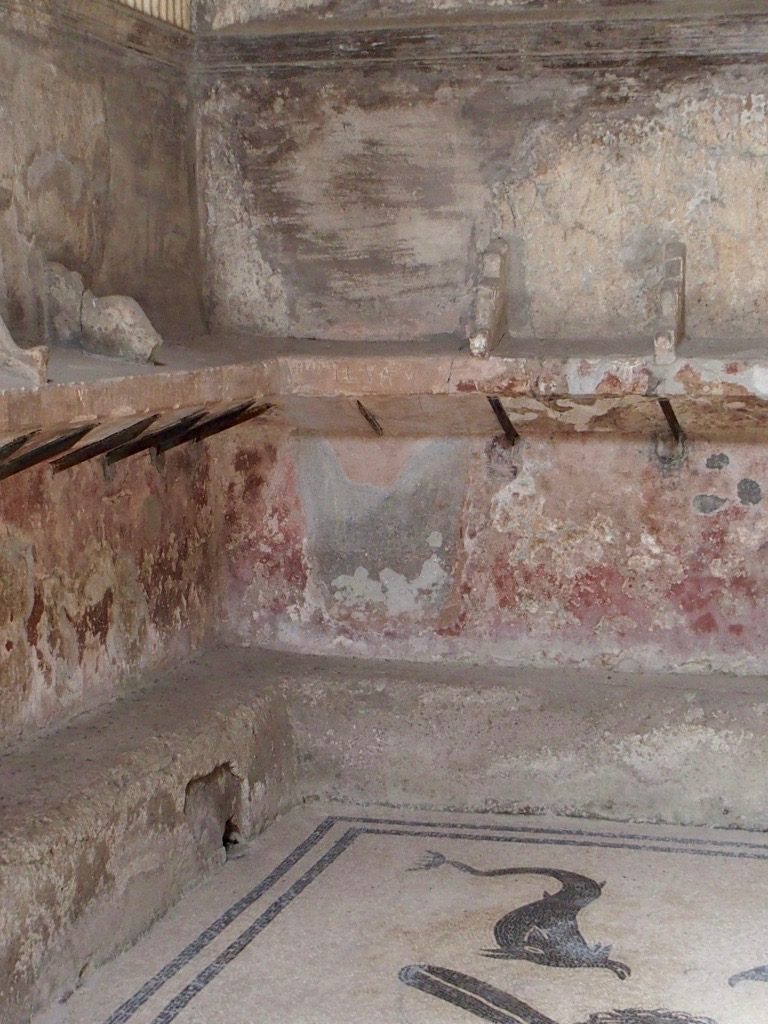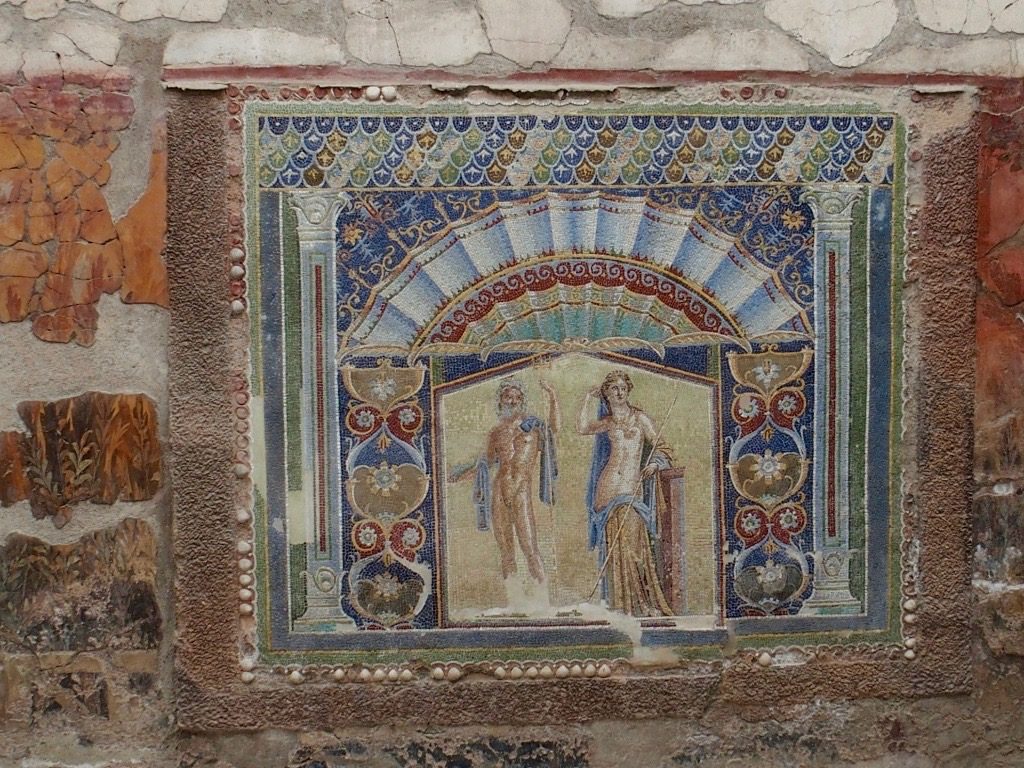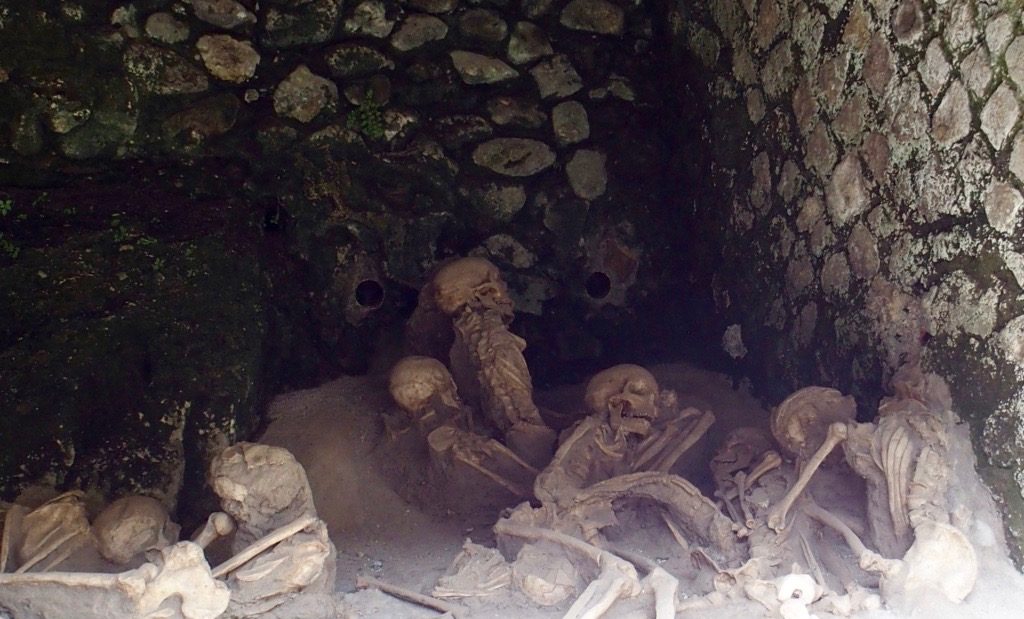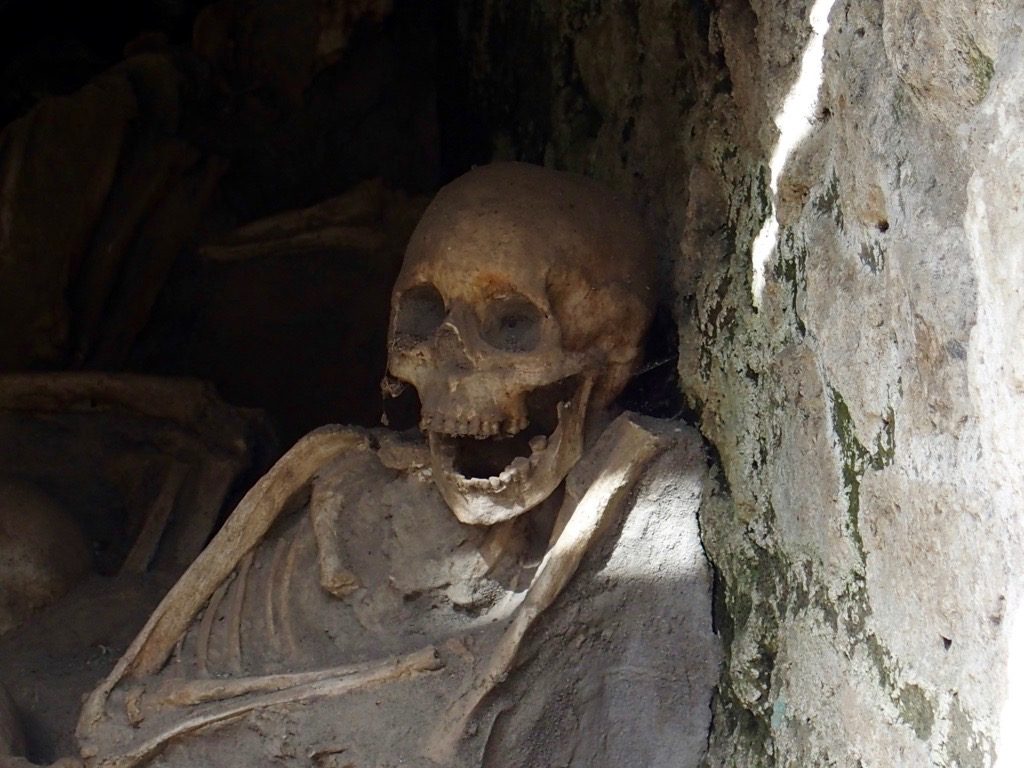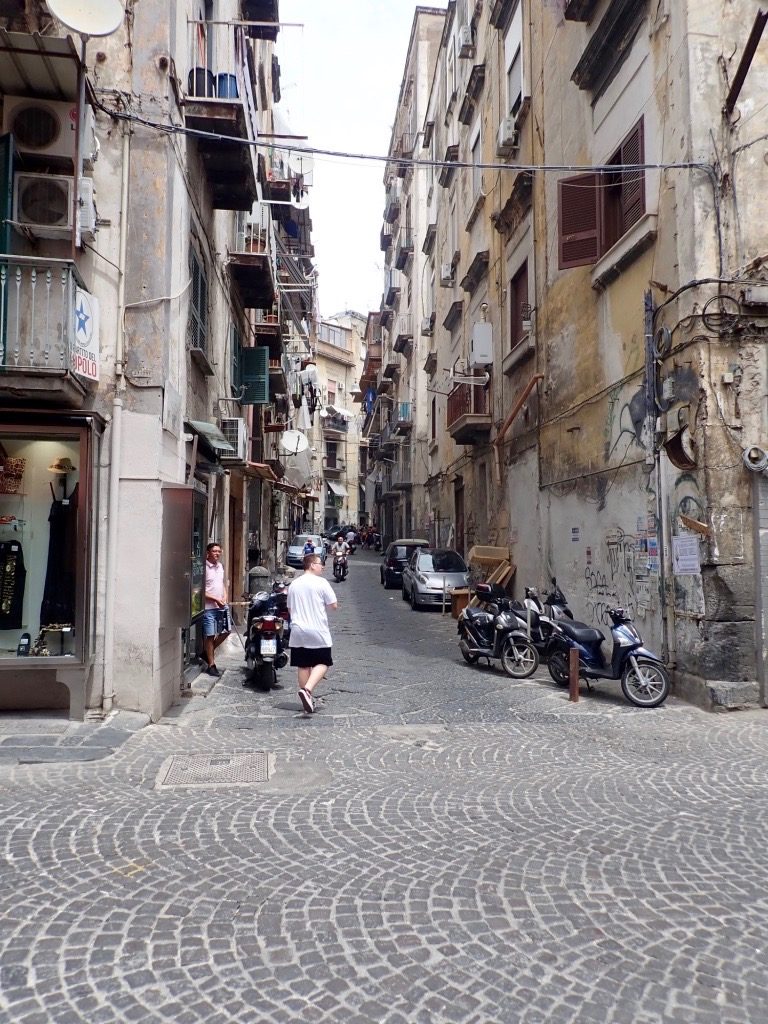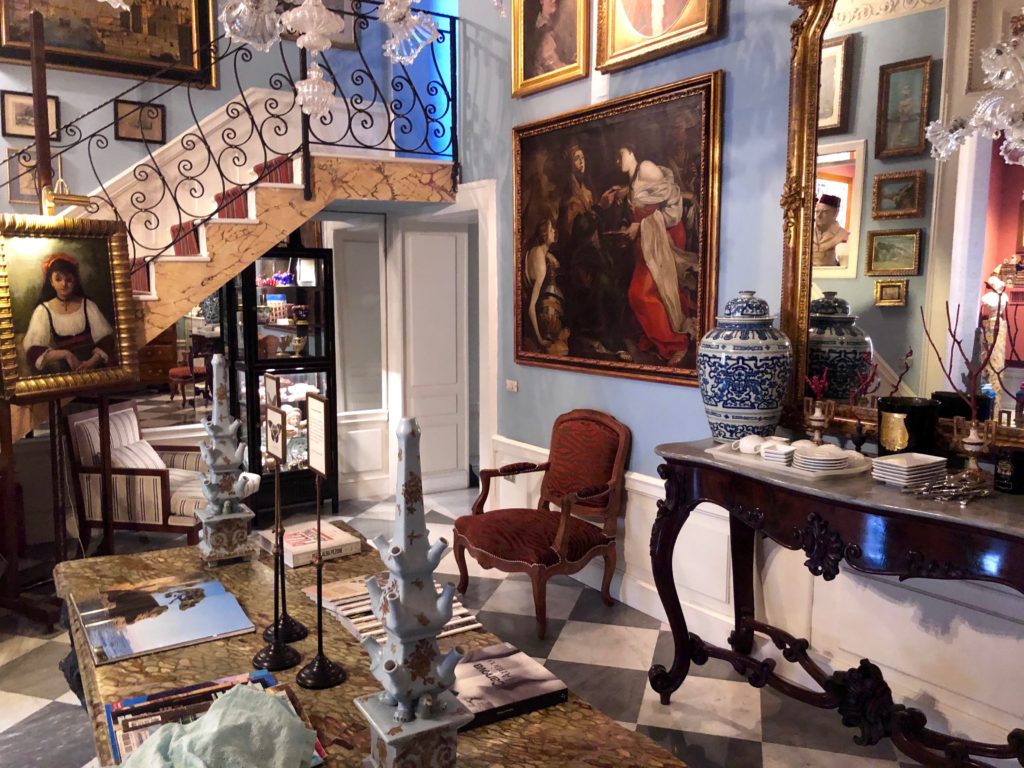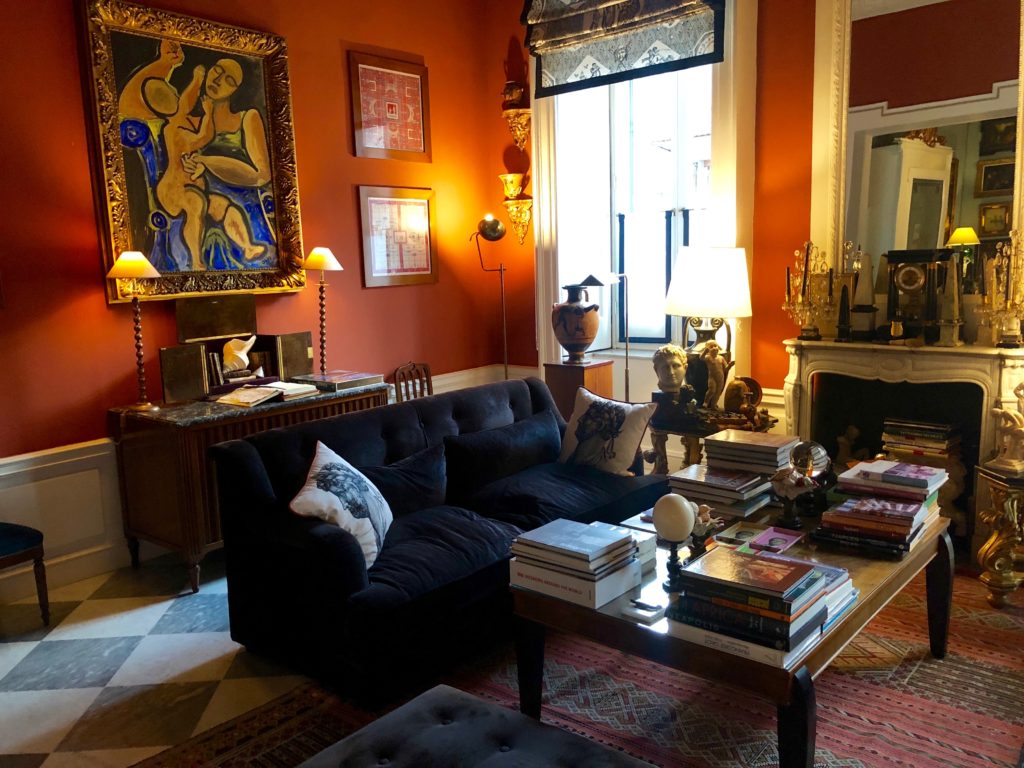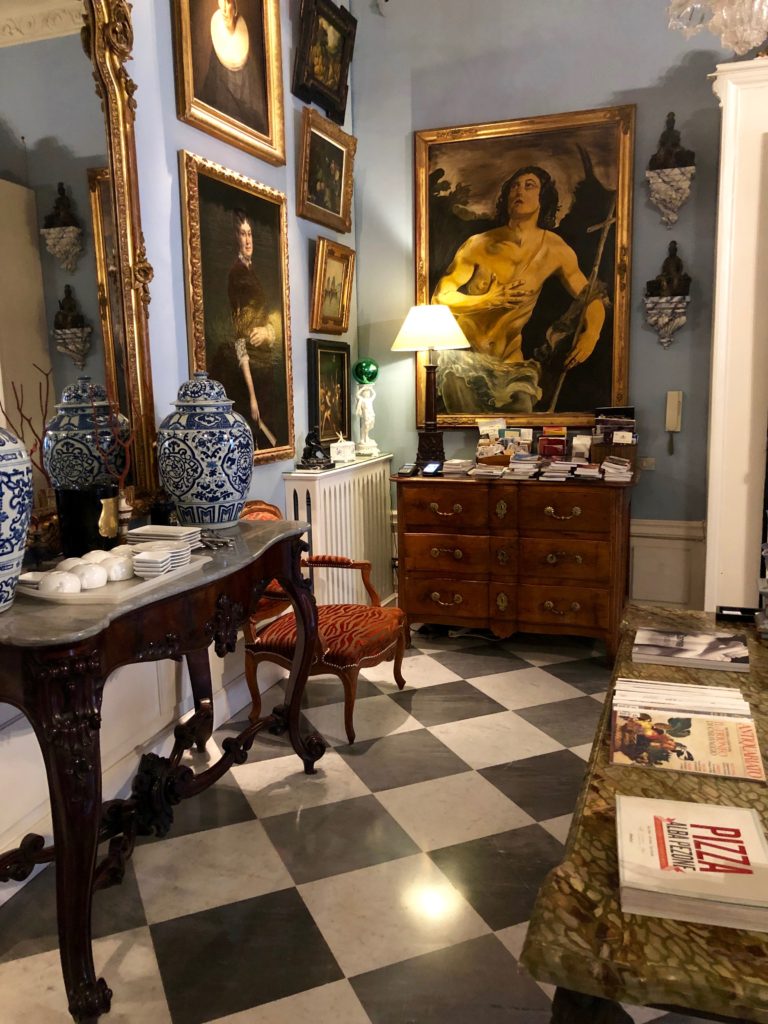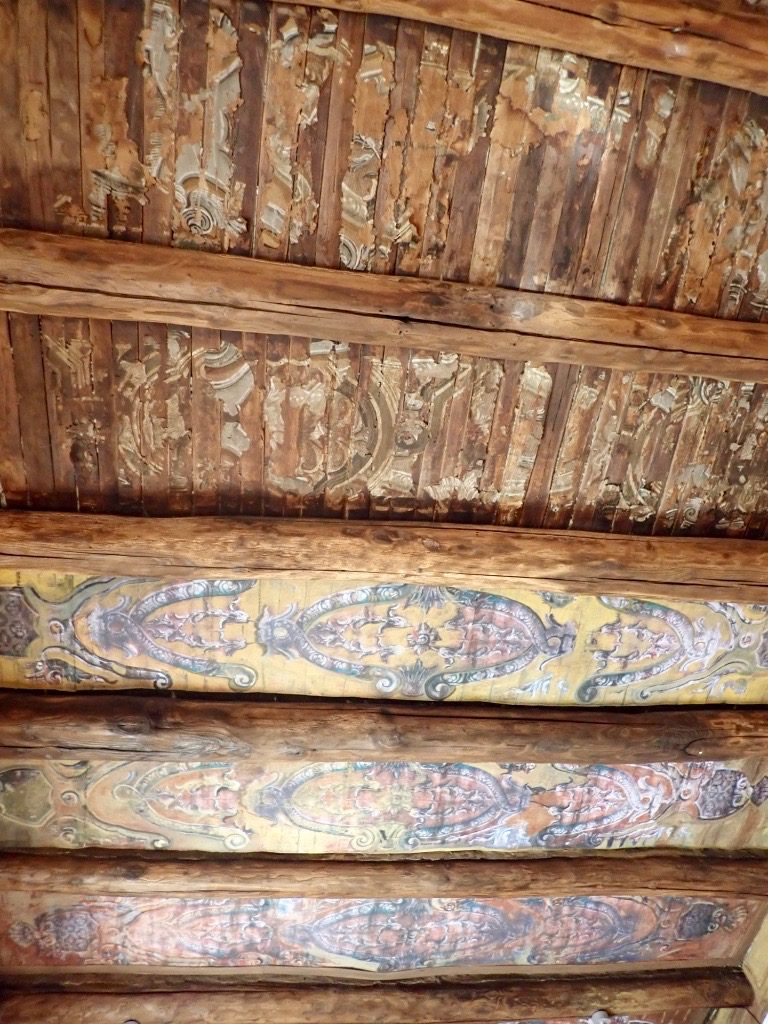24 hours was the perfect length of time to spend in Napoli. During those action packed 24 hours I enjoyed 2 pizzas, a fabulous seafood dinner, some great coffee, the gritty essence of the Napoli Streets, and the Herculaneum UNESCO site. Basically, the Herculaneum is similar to its sister city Pompeii, only smaller and less visited. Being just 14 KM from Napoli it’s also a more practical option when pressed for time. Herculaneum was buried in 20 meters of hot ash (approximately 60 feet) at the same time as Pompeii in AD 79 with the eruption of Mount Vesuvius. The original city dates back to the 6th to the 4th centuries BC. Many of the structures including the wooden portions such as roofs, beams, and doors were all well preserved because the pyroclastic material that covered the city carbonized and thereby preserved nearly everything. Even other organic materials like food were preserved. As of today it is estimated that 75% of the city still remains buried. Unfortunately, the modern Italian cities of Ercolano and Portico lie above on the site, thus precluding any excavation.
Recent multidisciplinary research on the lethal effects of the pyroclastic surges during the eruption showed that in the vicinity of Pompeii and Herculaneum, heat was the main cause of death of people previously thought to have died from suffocation caused by the ash. This study showed that exposure to these surges, measuring at least 250 degrees celsius (482 degrees fahrenheit) even at at distance of 10-15 kilometers from the volcano vent was sufficient enough to cause instant death.
